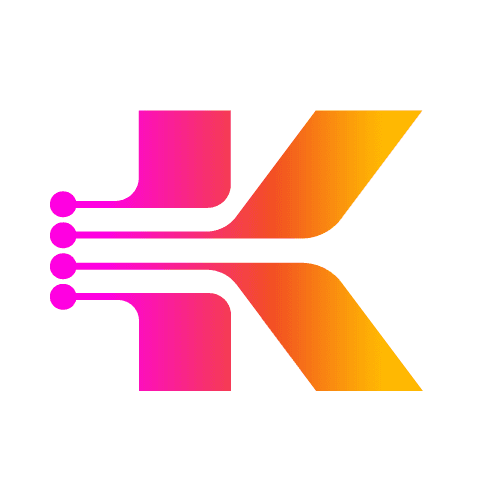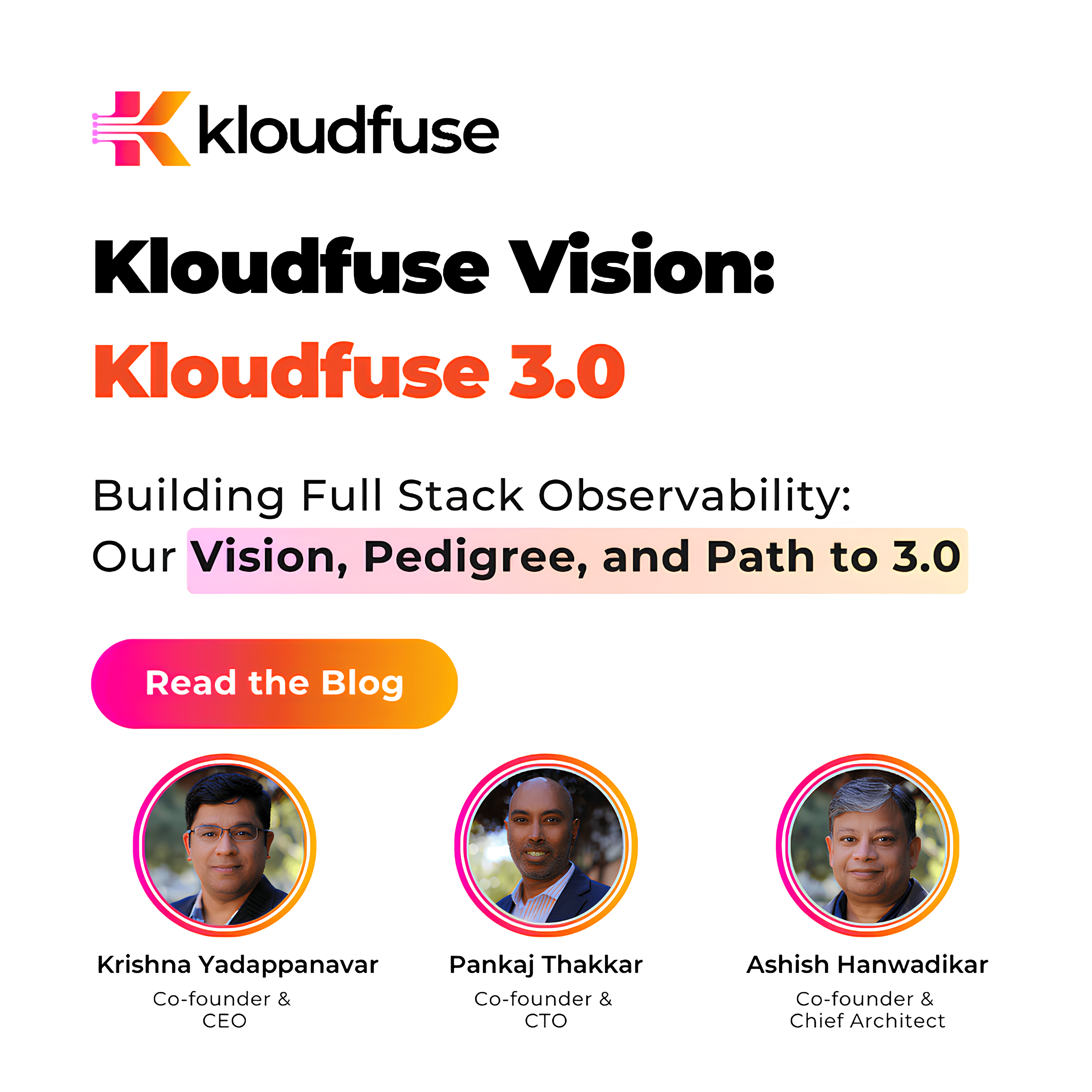Unveiling Kloudfuse 3.0

By
The Kloudfuse Team
Published on
Nov 6, 2024
Table of Contents
Introduction
Today, organizations are increasingly focused on application performance, which directly impacts customer satisfaction, adoption, and growth. They are also seeking operational efficiency to reduce costs, and we believe that the right observability platform is key to achieving these goals.
Our mission is clear: to empower businesses with the tools they need to navigate the complexities of their applications and infrastructure performance while managing costs.
We’re excited to unveil Kloudfuse 3.0—a significant advancement in our unified full-stack observability framework. This release introduces a range of powerful features centered around five core themes that have always guided our focus:
Unification of the observability data across the entire stack.
Extensibility of the observability data lake to multiple platforms on different clouds.
Reducing Mean Time to Resolution (MTTR) for developers, DevOps, and SRE teams.
Delivering intelligent insights that enhance user experience and developer productivity.
Optimizing costs while managing increasing data volumes.
Let’s reflect on our journey and the vision that shaped Kloudfuse 3.0.
The Evolution of the Kloudfuse Platform
Kloudfuse 1.0: Establishing the Foundation
In our inaugural release, we focused on building a robust platform anchored by an Observability Data Lake as the foundation of our architecture. Recognizing the fragmentation in the market and the challenges developers face with manual issue resolution, we launched our initial version to capture metrics and logs within a single platform. Our vision was to integrate additional observability streams as we continued to expand. Early client feedback confirmed that this approach significantly reduced the mean time to detect issues by correlating metrics with underlying logs, streamlining the workflow for engineering and DevOps teams.
We also focused on creating an observability data lake designed for private deployments, managed by a control plane, addressing a significant gap in the market. Many organizations we spoke with expressed their frustration with the high costs of SaaS solutions, vendor lock-in, and security/compliance concerns. For many, the only alternative had been to develop their own observability tools, which was neither practical nor efficient.
Lastly, to facilitate quick adoption, we supported popular agents, including OpenTelemetry and vendor-specific options, enabling enterprises to transition to our integrated and cost-effective platform easily. Additionally, we implemented our data access layer with open standards, further simplifying the migration process.
Kloudfuse 2.0: Advancing In-Depth Intelligence and Global Deployments
In our second release, we launched Application Performance Monitoring (APM) and fully integrated OpenTelemetry to enhance observability and create a robust troubleshooting platform. This update allowed our customers to correlate their trace data with logs and metrics, providing a unified solution for both Developers and SREs. As a result, they can effectively improve application performance and achieve faster detection and resolution times. This feature was particularly crucial as microservice architectures gained traction, making distributed tracing vital for effective troubleshooting.
We also integrated AI-driven intelligence, leveraging algorithms such as DBSCAN and SARIMA to provide smarter insights, further streamlining issue detection for developers. The introduction of Advanced Services Monitoring (ASM) and eBPF offered deeper visibility, delivering a holistic view of application performance.
In this release, we expanded our deployment options to include all three major cloud infrastructures: AWS, Azure, and GCP. As our customer base grew across multiple regions, data sovereignty became essential. Many customers sought assurance that their data would not be sent to the US, making data residency and sovereignty a top priority for us.
Kloudfuse 3.0: Delivering Full Stack Observability
Responding to customer demand for comprehensive full-stack observability, Kloudfuse 3.0 builds on the successes of our previous versions. Utilizing our Metrics, Events, Logs, and Traces (MELT) framework, we have added frontend observability features, including Real User Monitoring and session replays, to enhance the overall user experience for both web and mobile based applications.
To complete our application performance monitoring capabilities, we also have implemented Continuous Profiling, empowering developers to perform code-level profiling. This functionality enables teams to identify low-quality code to ensure application reliability.
With the addition of frontend and digital experience monitoring, as well as code-level continuous profiling, our platform now has gained access to significantly more data. This prompted two key initiatives: first, to enhance our intelligence capabilities for deriving deeper insights from our comprehensive full-stack observability data, helping to identify crucial details amidst the noise. Second, to manage the volume of data we ingest, process, and analyze, ensuring cost efficiency while delivering high-quality insights.
To advance our analytics capabilities, we integrated Prophet into our platform, enhancing our anomaly detection and forecasting. Prophet has proven to offer greater flexibility for both small and large datasets, resulting in more accurate outcomes with less tuning required. Additionally, we introduced K-Lens, Facet Analytics, and FuseQL—each powerful analytical feature in their own right—making insights more accessible to developers, DevOps, and SRE teams.
To handle the larger volume of data now collected by our system, we implemented cardinality analytics and roll-ups for metrics and traces, enabling organizations to gain real-time insights into their observability data volumes while effectively managing data to reduce storage and processing costs. We also developed an archival and hydration feature that allows customers to retain logs for compliance at a lower cost. Additionally to reduce the costs, we extended the platform capabilities to run on the ARM based graviton machines as they seem to be the most cost effective platform in some of the regions in the cloud.
Lastly, this release expands our enterprise capabilities with enhancements in RBAC, SSO, security certifications, an enterprise service catalog, and selective data isolation based on the customers attributes.
We are excited about the feedback from our current customers using these capabilities and look forward to learning from more developers as they explore our platform. Together, we are shaping the future of observability—and we’re doing it at an exhilarating pace.
To learn more and try the product, sign up here: https://www.kloudfuse.com/request-demo
Looking into the Future
As we look to the future, Kloudfuse is poised to lead the way in full stack observability by continuing to expand its offering to include more telemetry signals and serve newer workloads emerging in AI/LLM, offering advanced features that ensure organizations can effectively manage their machine learning and large language models.
Additionally, we are looking to enhance our Security and SecOps capabilities, integrating robust monitoring tools that provide real-time threat detection and response. By combining automated workflows with intelligent security measures, Kloudfuse aims to create a seamless and secure environment that not only safeguards sensitive data but also enhances operational resilience across the entire technology stack.
Stay tuned for more on these topics.


